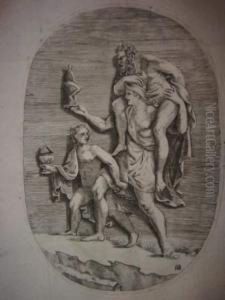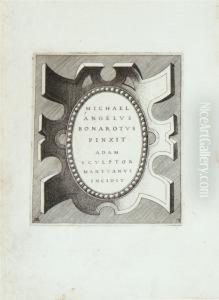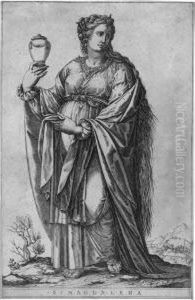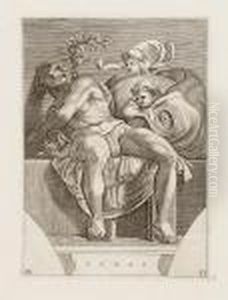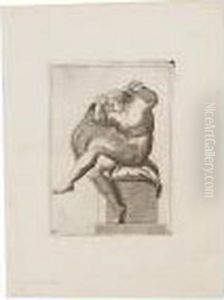Adamo Scultori Paintings
Adamo Scultori, also known as Adamo Ghisi, was an Italian engraver born around 1530 in Mantua, Italy. He hailed from a family of artists; his father, Giovanni Battista Scultori (also known as Ghisi), was also a well-known engraver, and his sister Diana Scultori achieved recognition in the same field. Adamo's work is often associated with the late Renaissance period, and he was particularly active during the 16th century, a time when the art of engraving was flourishing in Italy.
Adamo Scultori's career was largely influenced by the prevailing cultural and artistic environment of Mantua, which was under the rule of the Gonzaga family. The Gonzagas were great patrons of the arts, and their court attracted many artists and intellectuals of the time. Scultori's engravings predominantly featured religious and mythological themes, and he was known for his skillful translation of paintings and drawings by prominent artists into the medium of engraving. This practice was common in the period, serving both to disseminate the works of artists more widely and to satisfy the demand for art by a growing clientele that could not afford original paintings.
While little is known about the specifics of his training, it is evident from his work that Adamo Scultori mastered the intricate techniques of engraving, which involves incising a design onto a hard surface, such as a copper plate, to produce images. His engravings were noted for their delicacy, precision, and the dynamic interplay of light and shadow, characteristics that were highly appreciated in his time and that contributed to the reputation he enjoyed among his contemporaries.
Scultori's works were often based on the designs of prominent artists of the day, such as Giulio Romano, a prominent pupil of Raphael who was also active in Mantua. Scultori's engravings served to propagate Romano's style and compositions to a wider audience. Adamo Scultori's engravings were collected and admired not only in Italy but also across Europe, contributing to the diffusion of Italian Renaissance art and ideas.
Adamo Scultori died in 1585. Although not as widely known today as some of his contemporaries, Scultori's work remains an important part of the history of printmaking. His engravings continue to be studied and appreciated for their technical mastery and their role in the dissemination of Renaissance art.
